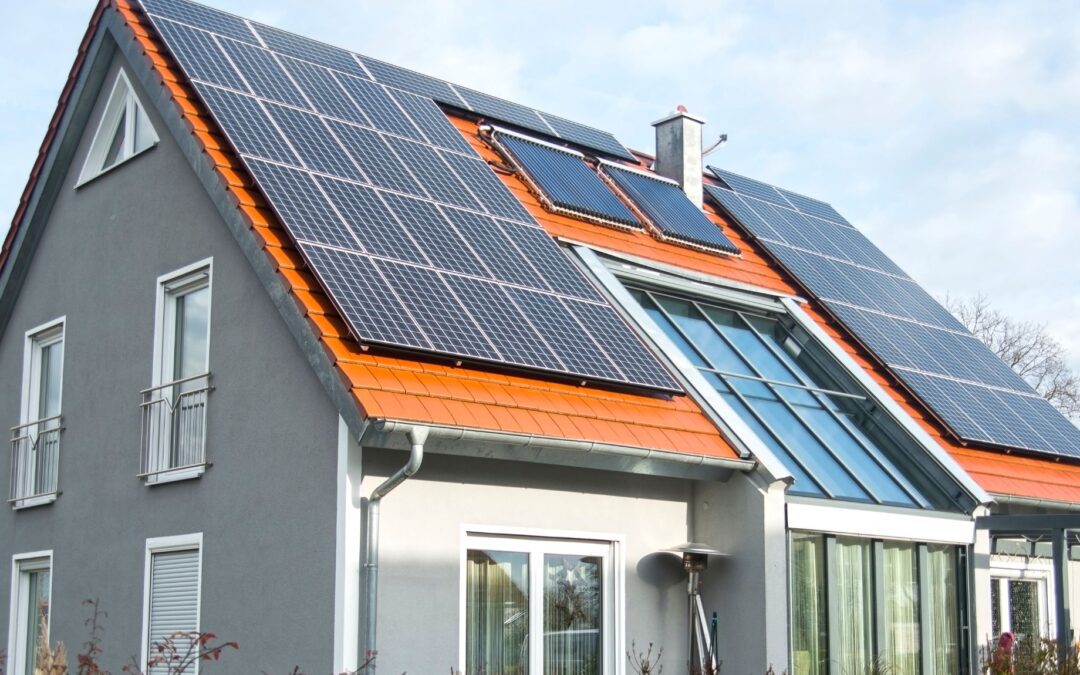The term “net-zero” is everywhere we turn these days as it is a solution to climate change.
The concept of net zero homes becomes even more relevant as Canadians face rising energy prices. Net zero (or near net zero) homes can significantly reduce living expenses for homeowners all while helping us create climate ready neighbourhoods and communities.
What is a net-zero home?
A net zero energy home, broadly speaking, is any home that produces as much energy as it consumes. These homes typically have high insulation levels to minimize heat loss in the winter and heat gain in the summer, and solar panels to produce the small remaining amount of energy needed.
In Canada there are two ways for a house to be confirmed as a net zero building. One is to have an Energuide rating completed on the house and achieve a rating of zero GJ. Another is for homes to be built or renovated to a standard set forth by the Canadian Home Builders’ Association (CHBA) to be labelled ‘Net Zero’.
Taking a home from an energy hog to a net zero one can be an expensive endeavour. The CHBA understands this and has developed an additional label called ‘Net Zero Ready’.
These are homes that have reduced their energy consumption to a low enough level to meet the efficiency standards as Net Zero Homes but do not yet have renewable energy generation systems installed.
These buildings are designed with the necessary electrical and structural upgrades so that solar panels can easily be added later without the cost of having to open walls.
Why net zero?
As mentioned above, net zero homes consume less energy than they produce. This means, Canadians living in net zero homes will have much reduced energy costs in comparison to a conventional home.
High efficiency homes also significantly improve the comfort factor of your living environment. Well-insulated walls will help maintain consistent temperature throughout the house — even in the dead of winter.
Besides increased comfort, this also means less indoor air pollution and reduced presence of allergens such as dust and pollen. The insulated walls also block out outdoor noise, making your home quieter.
On the climate action front, Canada has pledged to reduce its carbon emissions by 80 per cent of 2005 levels by 2050. Part of that goal to achieve net zero is reducing national carbon emissions by 40-45 per cent below 2005 levels by 2030.
Canadian buildings contribute 18 per cent of the national GHG-emissions. That’s nearly one-fifth of total emissions and the third largest contributing sector, after transportation and oil and gas!
Canada needs its homeowners to rise to the occasion to meet this target.
How do I make my home net zero?
Older homes can be retrofitted to reduce energy consumption and even become net zero. This retrofitting process can be done all at once or in stages spread over months or years.
What is important is to create a net zero energy plan to break down energy retrofit measures into three steps.
- Always do building envelope upgrades first. They reduce heating and cooling loads through better insulation, windows and air leakage control.
- Once those upgrades are complete, you can upgrade to smaller and less expensive heating and cooling systems that don’t have to work as hard to keep your home comfortable.
- Finally, because your heating, cooling, and electrical loads are smaller, the solar photovoltaic system that you install can get you to net zero much more easily without having to take up as much space on your roof or in your yard.
For some older homes, getting to net zero might not be physically or financially feasible. Maybe local zoning rules are not supportive or rooftop solar panels are outside of your budget. Your home may not have good enough sun exposure on the roof or in the yard for it to make sense to add solar.
Whatever the reason, if net zero is not possible for your home, you should look into getting a deep energy retrofit to increase comfort, reduce your energy bills, and reach personal or community emissions reduction goals. A deep energy retrofit provides savings beyond 50 percent (inclusive), but not all the way to zero.
What rebates are available to retrofit homes?
The federal government has introduced several supportive incentive programs, such as the Canada Greener Homes Grant and the Canada Greener Homes Loan, which provide rebates and loans to homeowners to retrofit and update their homes for efficiency and resilience.
Several provincial, territorial, and municipal governments, like the Province of British Columbia, the Government of Yukon, and the City of Toronto, also provide rebates and loans that work alongside the federal rebate programs to help Canadians draftproof their houses, improve the insulation in their walls and attics, upgrade windows and doors, find efficient solutions for heating, ventilation and water heating including switching to heat-pumps and adding renewable energy solutions.
Programs like Durham Greener Homes and Better Homes Kingston give bonus incentives when retrofits reach certain percentages of energy savings. With each home energy retrofit project, hitting the deep energy retrofit target of 50 per cent+ reduction will be very important for saving energy and for cutting our contributions to climatic overheating

Recent Comments